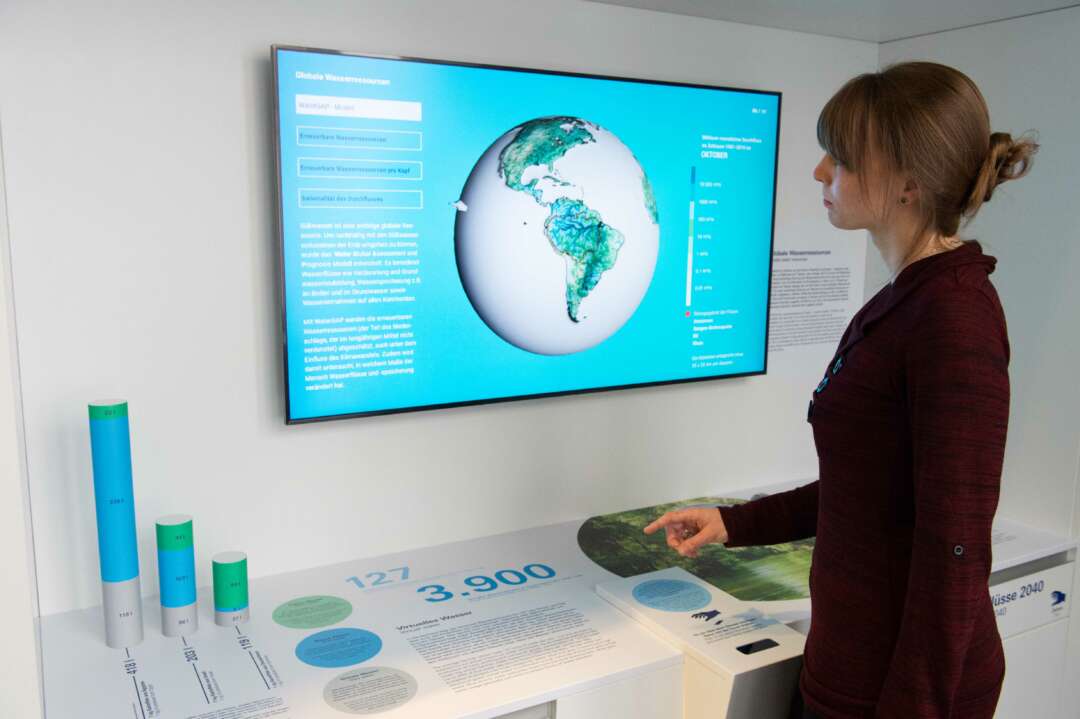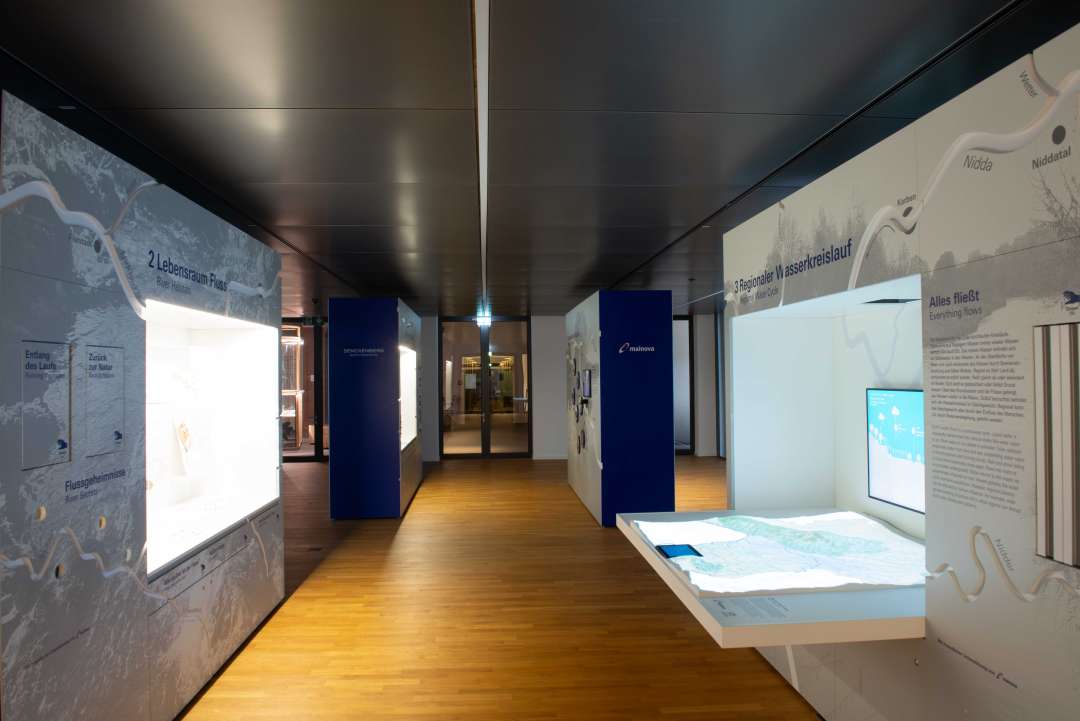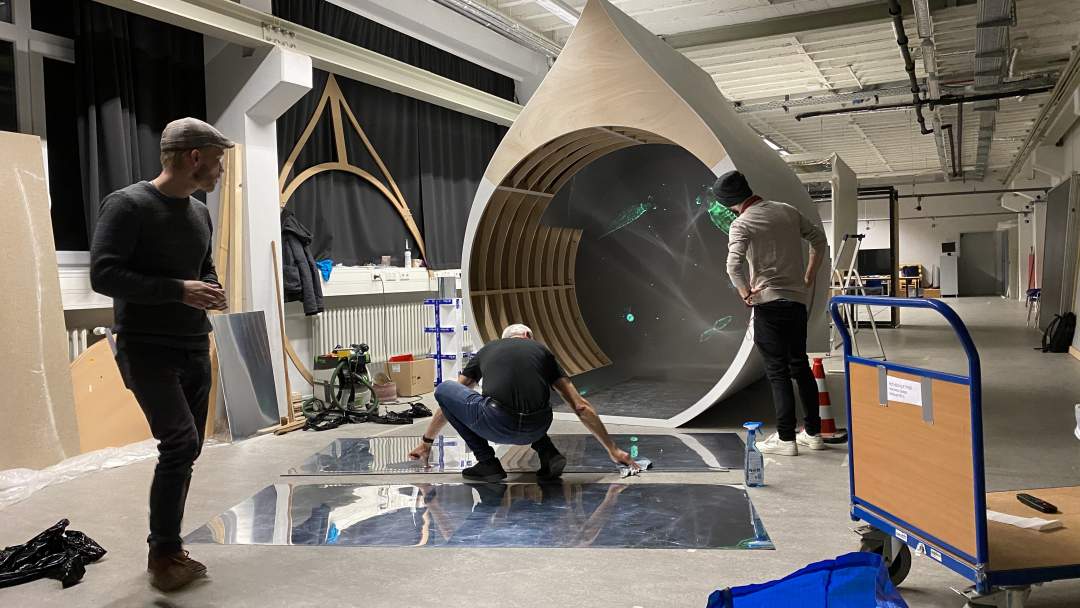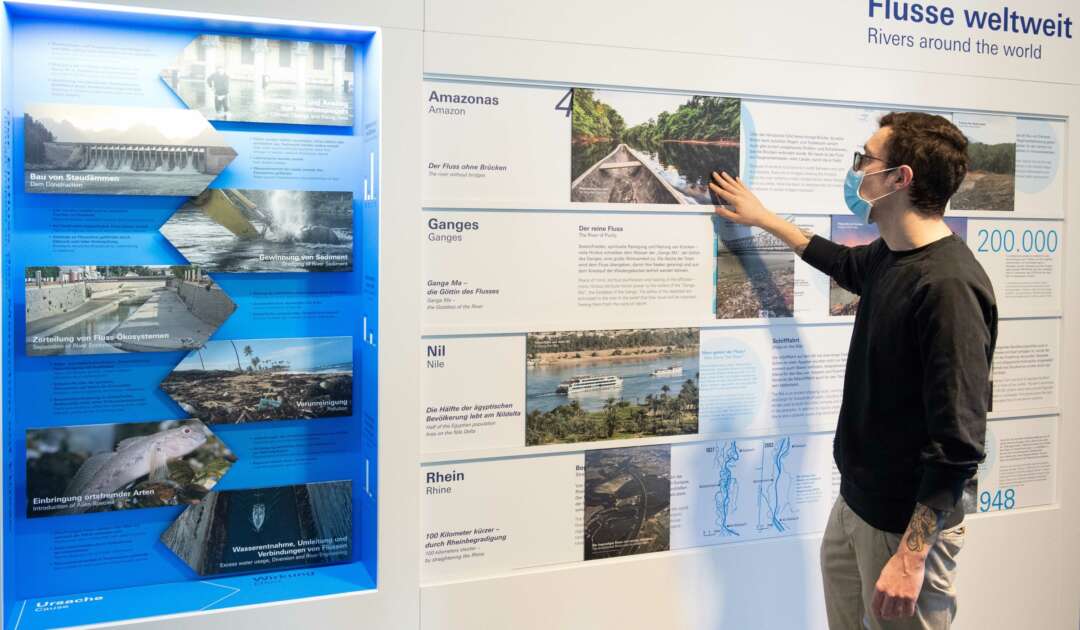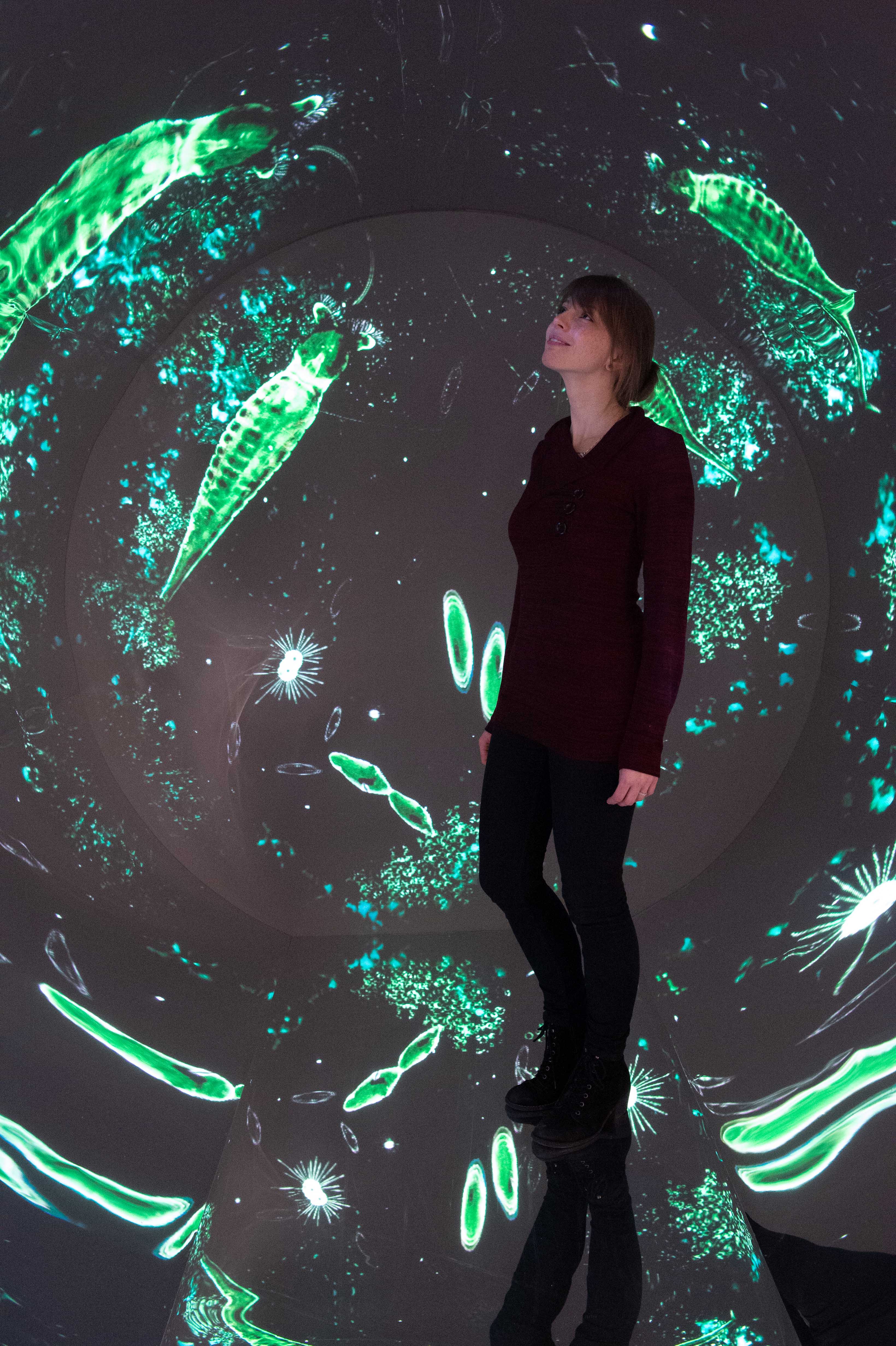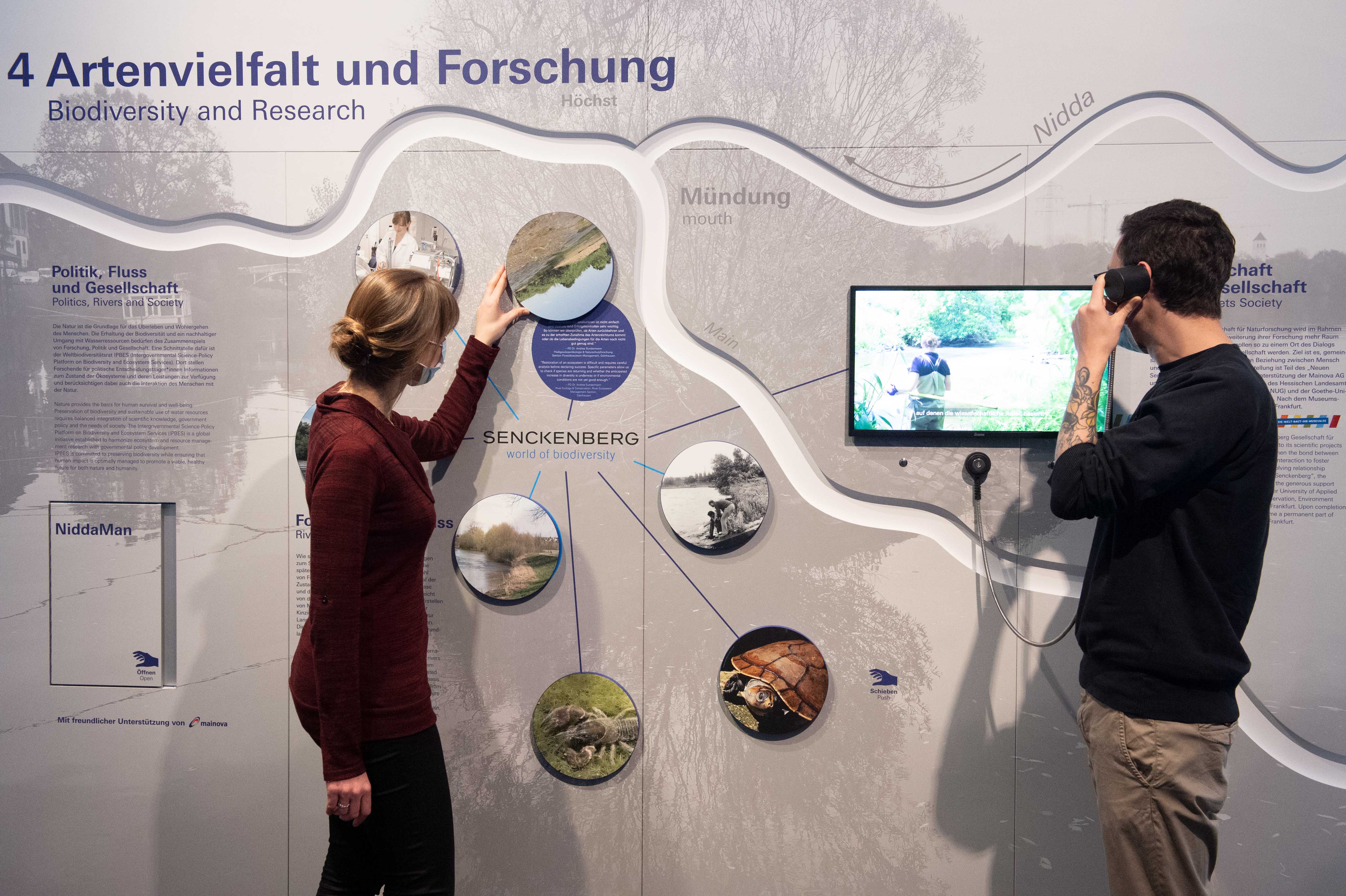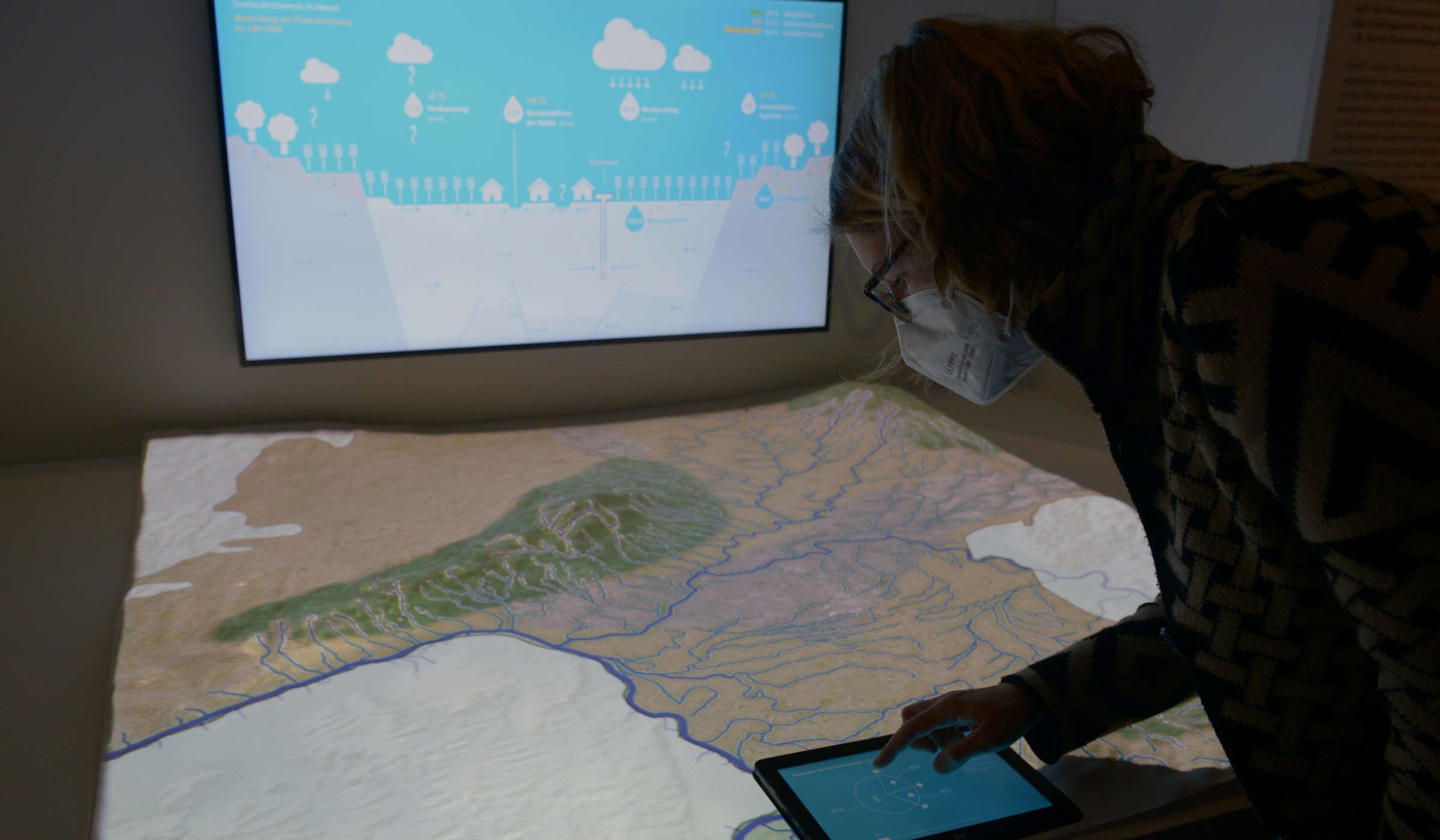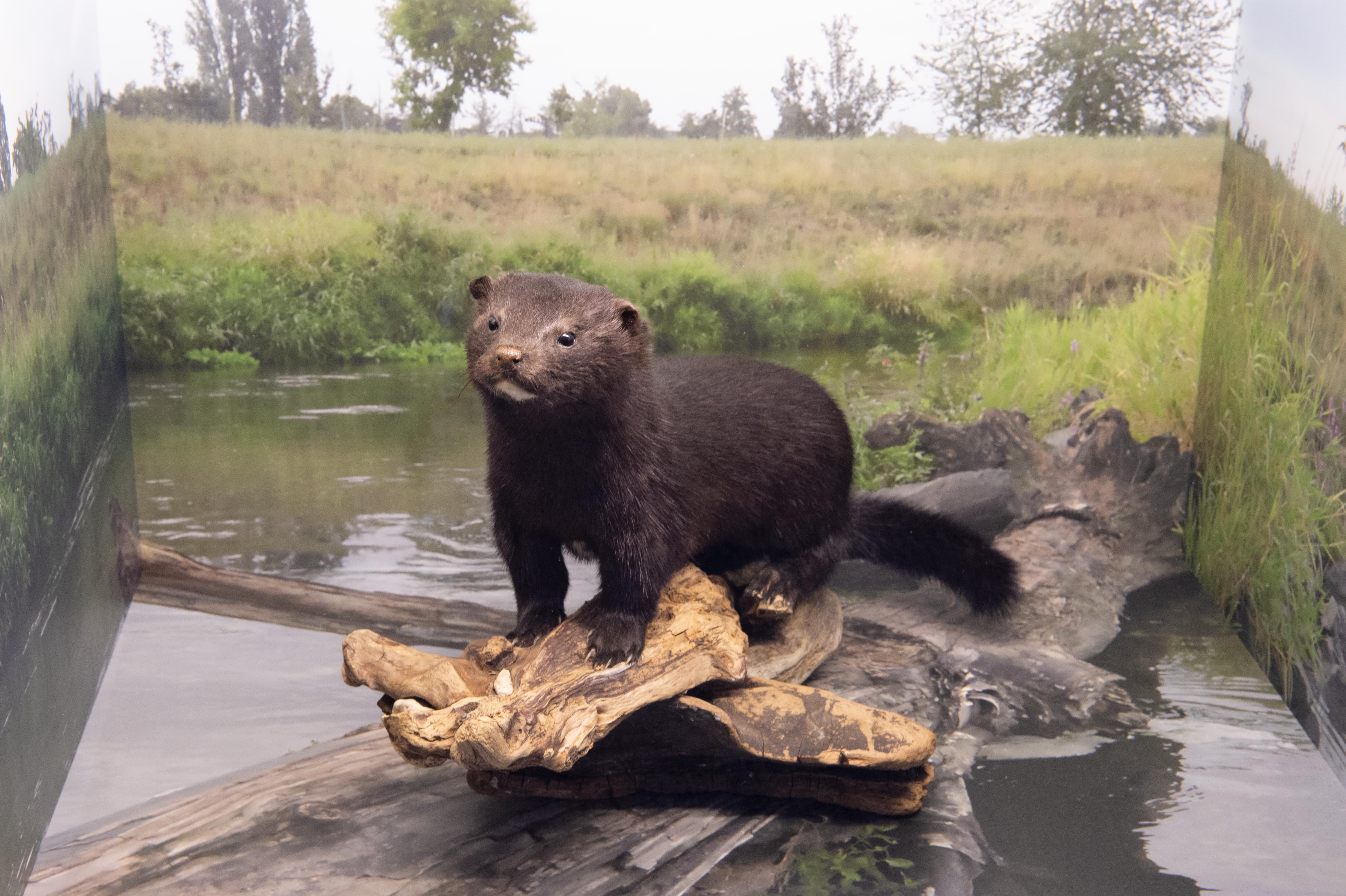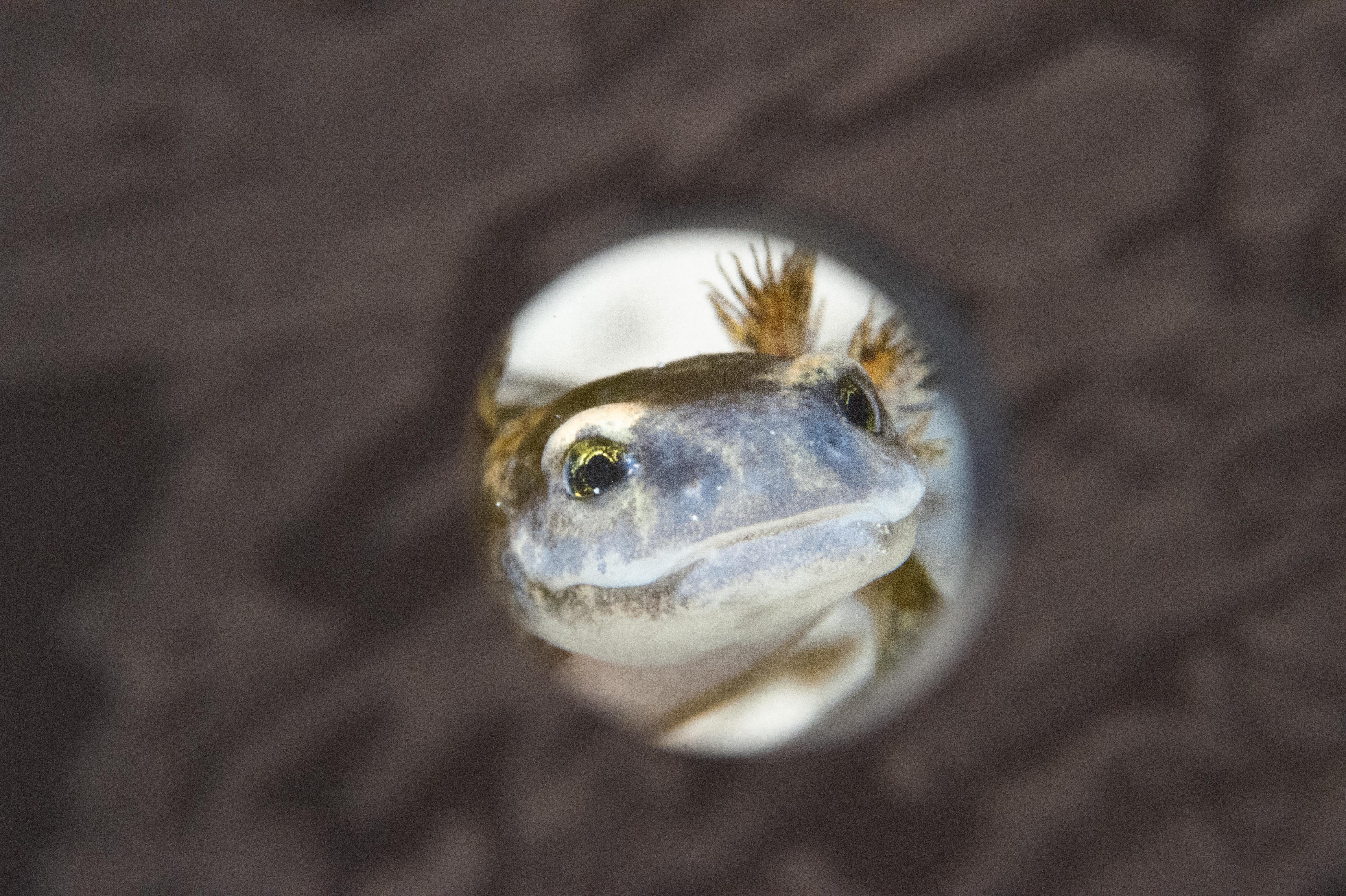Permanent exhibition
Rivers
Unfortunately, for organizational reasons the exhibition is occasionally closed.
The Nidda flows from the volcanic Vogelsberg to its mouth on the Main near Frankfurt-Höchst through Hesse. Now, the visitors flow with the water through the new exhibition “Rivers”. Using the example of the Nidda, the connection between geology and water, the biodiversity within the river, and the water cycle of the region, are clearly explained.
With the help of the Mainova AG, the Senckenberg Nature Museum has designed exceptional multi-media exhibits. The Senckenberg Society supplies Frankfurt with drinking water that is sustainably produced in the region and is committed to using water in a way that conserves resources, promoting the resource-friendly use of water locally. In the exhibition, a strong contextual reference to the region is deliberately made to help educate those about our work together.
As a drop of water, visitors shrink to the size of a grain of sand and enter a world that can otherwise only be seen under a microscope, and walk through the exhibition in this way. Tiny organisms which are larger than life swim around here – they can be delicate, sometimes they are translucent, and are of a surprising variety of shapes and sizes, as well as aesthetics.
Our second multi-media highlight exhibit provides us with a bird’s-eye view: visitors can survey the Rhine-Main region from the Vogelsberg to the Hessian Ried and are given the opportunity to manipulate the water cycle, all by themselves! What would happen to the water cycle if this area were to undergo construction or be built over, therefore being almost entirely sealed? What effect do our reforestation measures or the extensification of agricultural use have on the water cycle? What is the impact of extreme weather events such as torrential rains or extended drought? The simulation, which works with actual data from the Hessian State Agency for Conservation, the Environment, and Geology (HLNUG), was established in cooperation with the agency, and represents an absolute novelty.
Additional hands-on stations reveal astonishing facts regarding the water’s geology and the flora and fauna along the Nidda River. Among others, the exhibition offers close-up looks at the rare kingfisher and the shy mink – a species of mustelid introduced from North America. They serve as an example of animals that have returned to this habitat, or have become established here in the wake of the restoration measures along the Nidda, since the 1990s. Moreover, visitors can learn more about the full range of Senckenberg’s research in, and along, major rivers in our part of the world.
To provide a global perspective, four of the world’s largest rivers are introduced as examples: The Amazon, the Nile, the Ganges, and the Rhine. Aside from fascinating data and facts involving the diversity of ecosystems, special emphasis is placed on the cultural importance of these watercourses for the local residents. Animated maps illustrate the changes in water volume in these rivers over the course of the year. Unfortunately, the true global scarcity of water is often underestimated, and it is within our interest to show just how drastic the changes we are making to our water, and our world, are. In addition, animated world maps provide impressive insights into the development of renewable freshwater resources over the past decades.
